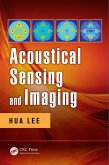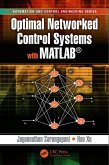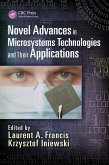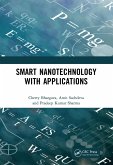In contrast to classical image analysis methods that employ "crisp" mathematics, fuzzy set techniques provide an elegant foundation and a set of rich methodologies for diverse image-processing tasks. However, a solid understanding of fuzzy processing requires a firm grasp of essential principles and background knowledge.
Fuzzy Image Processing and Applications with MATLAB® presents the integral science and essential mathematics behind this exciting and dynamic branch of image processing, which is becoming increasingly important to applications in areas such as remote sensing, medical imaging, and video surveillance, to name a few.
Many texts cover the use of crisp sets, but this book stands apart by exploring the explosion of interest and significant growth in fuzzy set image processing. The distinguished authors clearly lay out theoretical concepts and applications of fuzzy set theory and their impact on areas such as enhancement, segmentation, filtering, edge detection, content-based image retrieval, pattern recognition, and clustering. They describe all components of fuzzy, detailing preprocessing, threshold detection, and match-based segmentation.
Minimize Processing Errors Using Dynamic Fuzzy Set Theory
This book serves as a primer on MATLAB and demonstrates how to implement it in fuzzy image processing methods. It illustrates how the code can be used to improve calculations that help prevent or deal with imprecision-whether it is in the grey level of the image, geometry of an object, definition of an object's edges or boundaries, or in knowledge representation, object recognition, or image interpretation.
The text addresses these considerations by applying fuzzy set theory to image thresholding, segmentation, edge detection, enhancement, clustering, color retrieval, clustering in pattern recognition, and other image processing operations. Highlighting key ideas, the authors present the experimental results of their own new fuzzy approaches and those suggested by different authors, offering data and insights that will be useful to teachers, scientists, and engineers, among others.
Fuzzy Image Processing and Applications with MATLAB® presents the integral science and essential mathematics behind this exciting and dynamic branch of image processing, which is becoming increasingly important to applications in areas such as remote sensing, medical imaging, and video surveillance, to name a few.
Many texts cover the use of crisp sets, but this book stands apart by exploring the explosion of interest and significant growth in fuzzy set image processing. The distinguished authors clearly lay out theoretical concepts and applications of fuzzy set theory and their impact on areas such as enhancement, segmentation, filtering, edge detection, content-based image retrieval, pattern recognition, and clustering. They describe all components of fuzzy, detailing preprocessing, threshold detection, and match-based segmentation.
Minimize Processing Errors Using Dynamic Fuzzy Set Theory
This book serves as a primer on MATLAB and demonstrates how to implement it in fuzzy image processing methods. It illustrates how the code can be used to improve calculations that help prevent or deal with imprecision-whether it is in the grey level of the image, geometry of an object, definition of an object's edges or boundaries, or in knowledge representation, object recognition, or image interpretation.
The text addresses these considerations by applying fuzzy set theory to image thresholding, segmentation, edge detection, enhancement, clustering, color retrieval, clustering in pattern recognition, and other image processing operations. Highlighting key ideas, the authors present the experimental results of their own new fuzzy approaches and those suggested by different authors, offering data and insights that will be useful to teachers, scientists, and engineers, among others.
Dieser Download kann aus rechtlichen Gründen nur mit Rechnungsadresse in A, B, BG, CY, CZ, D, DK, EW, E, FIN, F, GR, HR, H, IRL, I, LT, L, LR, M, NL, PL, P, R, S, SLO, SK ausgeliefert werden.









